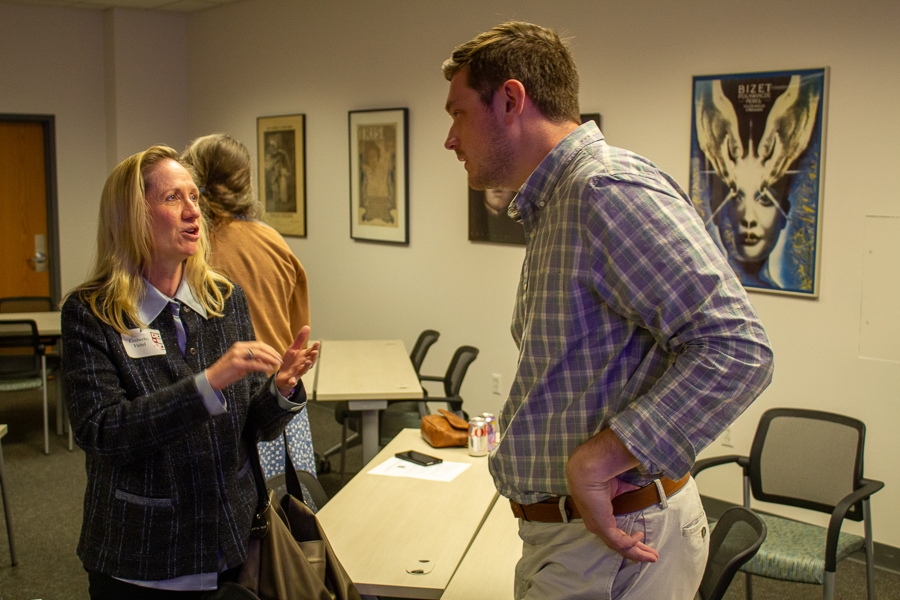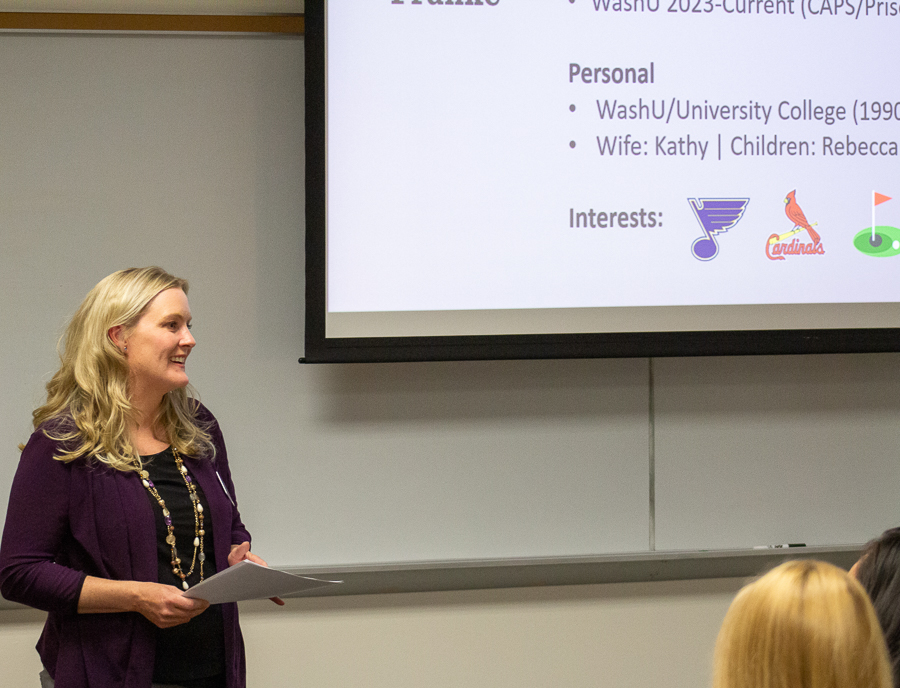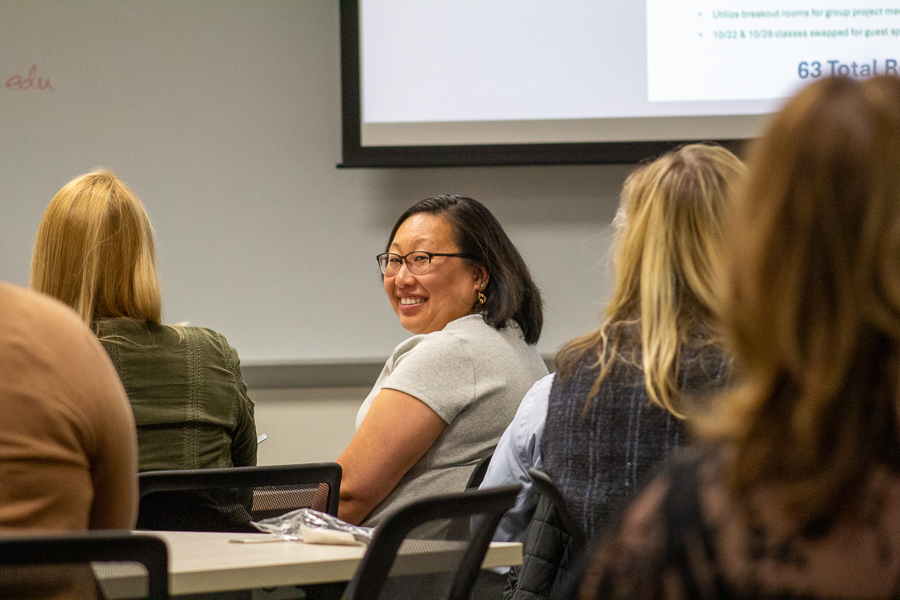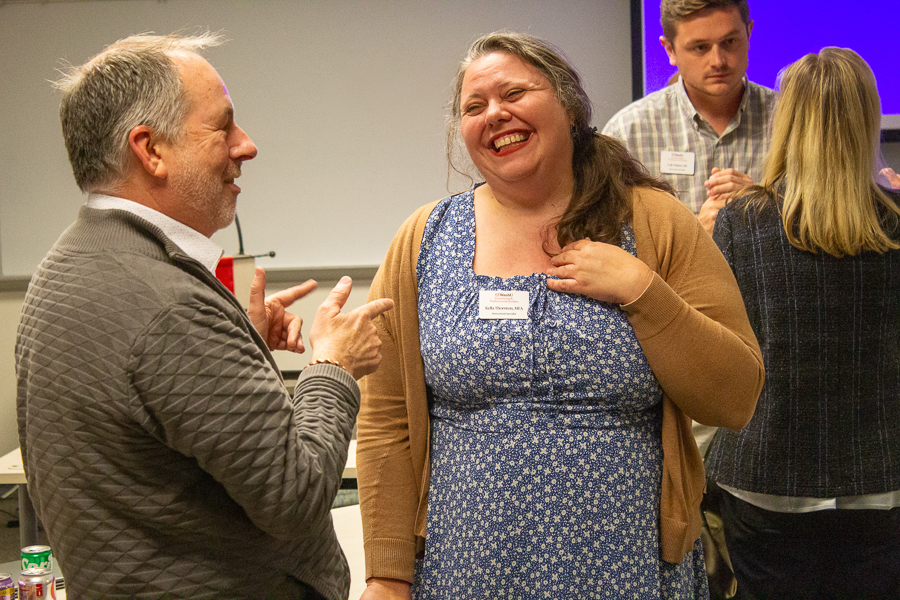Each year, the Faculty Show and Share event at WashU Continuing & Professional Studies (CAPS) brings together instructors who are redefining what meaningful, student-centered teaching can look like.
This year’s event featured presentations from standout instructors whose creative approaches to engagement, feedback and learning environments are making lasting impacts.
“This event has evolved over the last ten years,” said Lindsay Meador, CAPS Accreditation & Senior Program Manager. “We started by focusing on online teaching, but it’s grown into something much bigger—a way to spotlight how CAPS faculty innovate in real time to support their students.”
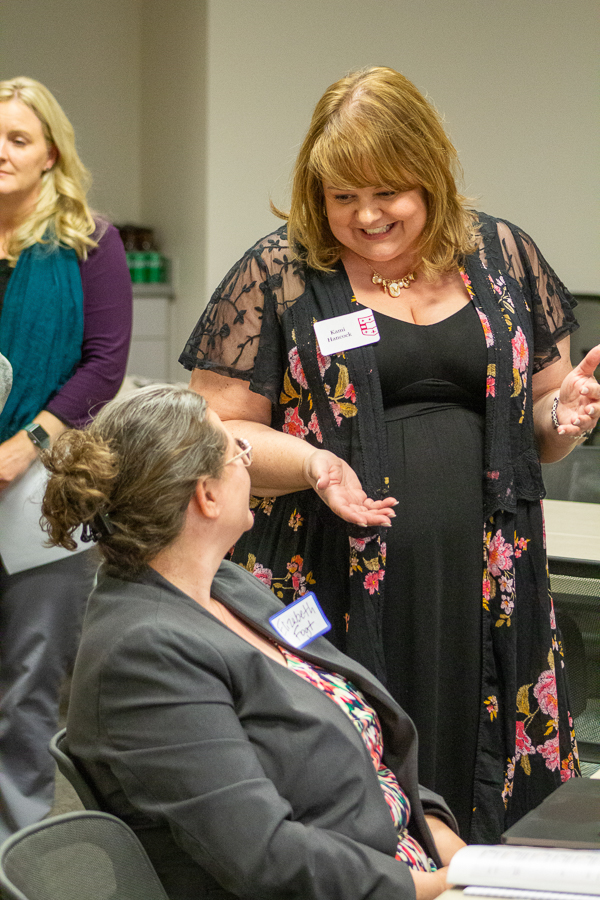
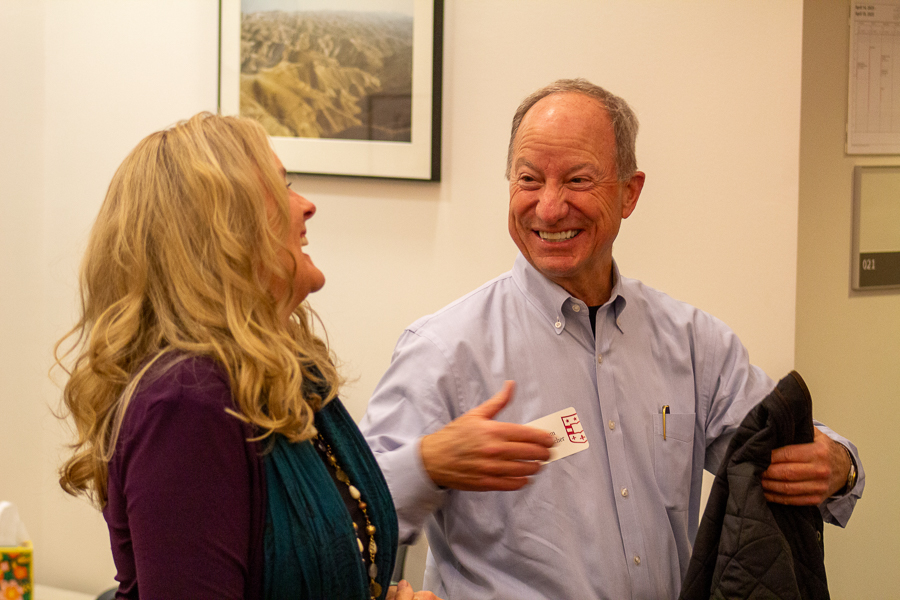
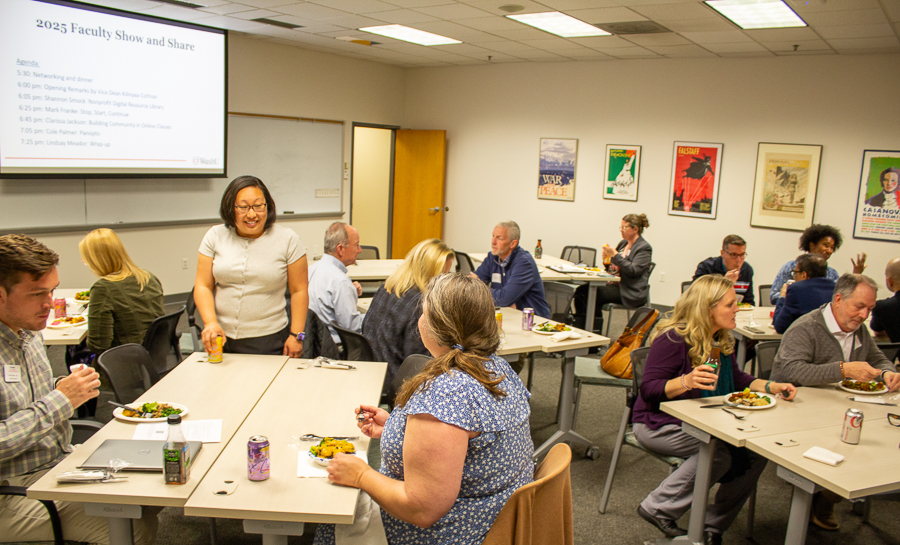
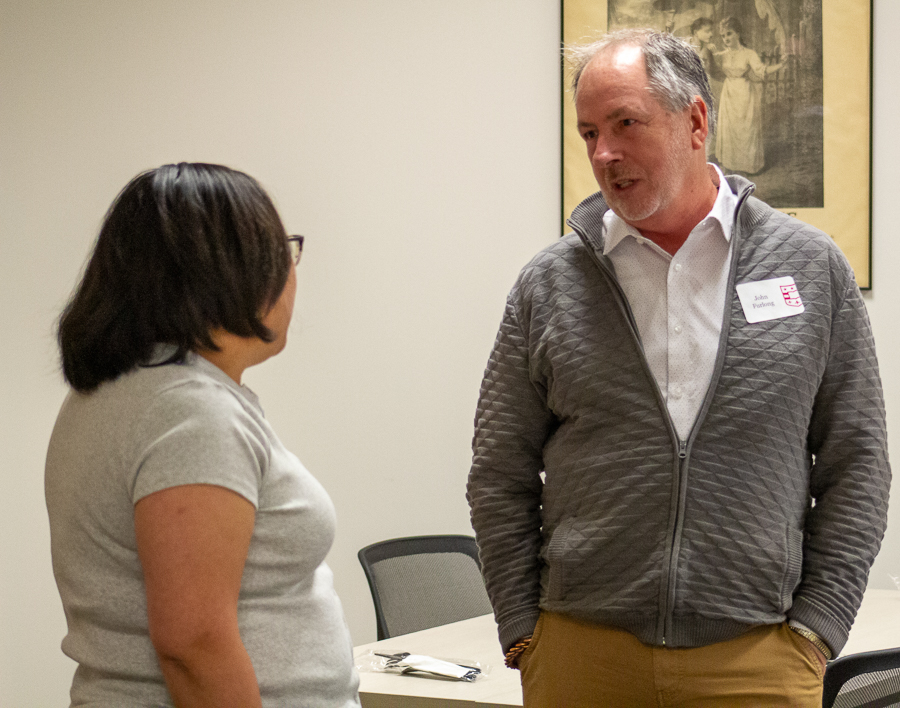
Creating Feedback Loops That Matter: Mark Franke’s “Start-Stop-Continue”
Mark Franke, who teaches supply chain and management courses, brought insights from decades in the corporate world into the CAPS classroom—including a powerful exercise he calls “Start-Stop-Continue.”
“This was something I’d used in the business world for years,” Franke said. “It’s a simple but highly effective way to get meaningful feedback—and more importantly, act on it.”
Franke first implemented the exercise with students in the Prison Education Project (PEP), asking them what should start (new ideas to try), stop (what wasn’t working), and continue (what was already working well). In other classes he uses a live, anonymous digital polling tool, where students can provid their responses throughout the class period.
“We had 63 responses from 22 participants. That’s a huge engagement rate,” said Franke. He categorized responses and summarized them back to the class, along with a plan for what changes he would implement.
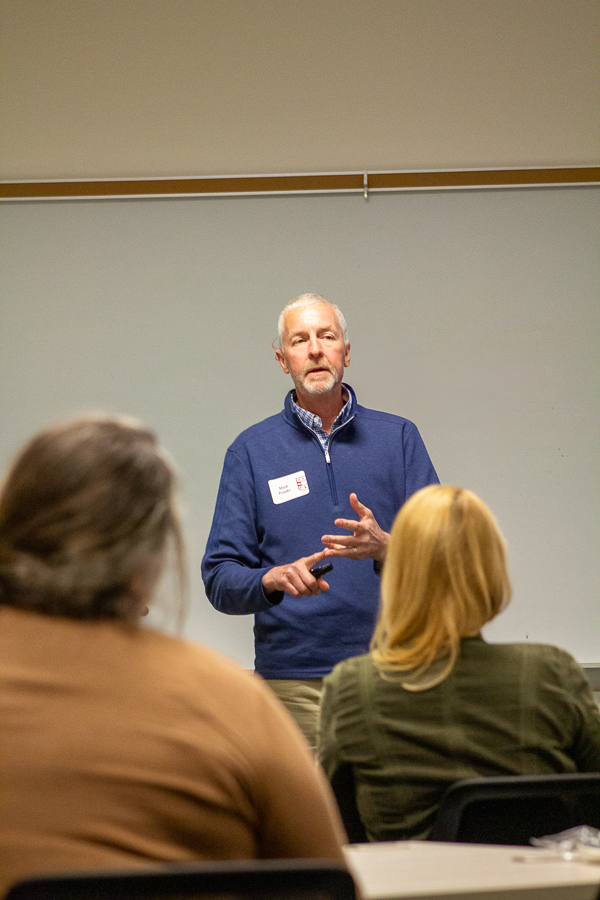
“You have to be committed to acting on the feedback,” he explained. “If students share ideas and nothing happens, morale drops.”
Franke’s method paid off. The class reported improved alignment with learning goals, more spirited debate and a greater sense of ownership in their learning experience.
“It’s not my class—it’s our class,” he said. “That’s what I want students to feel.”
Bringing Social Work into the Classroom: Clarissa Jackson’s Community-Focused Approach
Clarissa Jackson, adjunct faculty member and admissions specialist at WashU Brown School, teaches online courses in social work—but what truly sets her teaching apart is how she builds community in digital spaces.
“I use a social work approach with my students,” Jackson shared. “The same way we engage clients through the Planned Change Process, I engage my students—with empathy, clarity and care.”
After early experiences teaching left her feeling disconnected from her students, Jackson reevaluated her entire strategy.
“I tried to teach how I had been taught—strict and by-the-book,” she said. “But that didn’t work. It wasn’t me.”

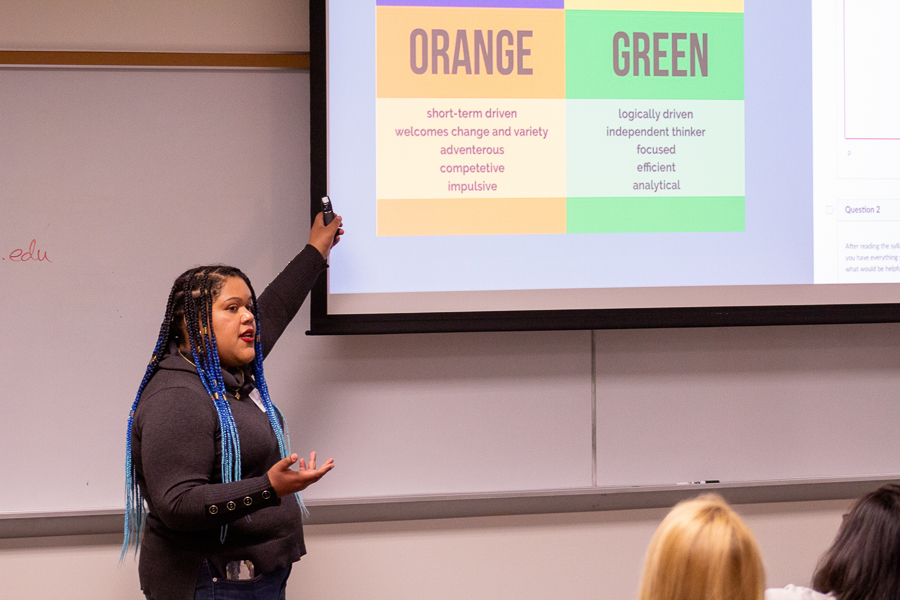
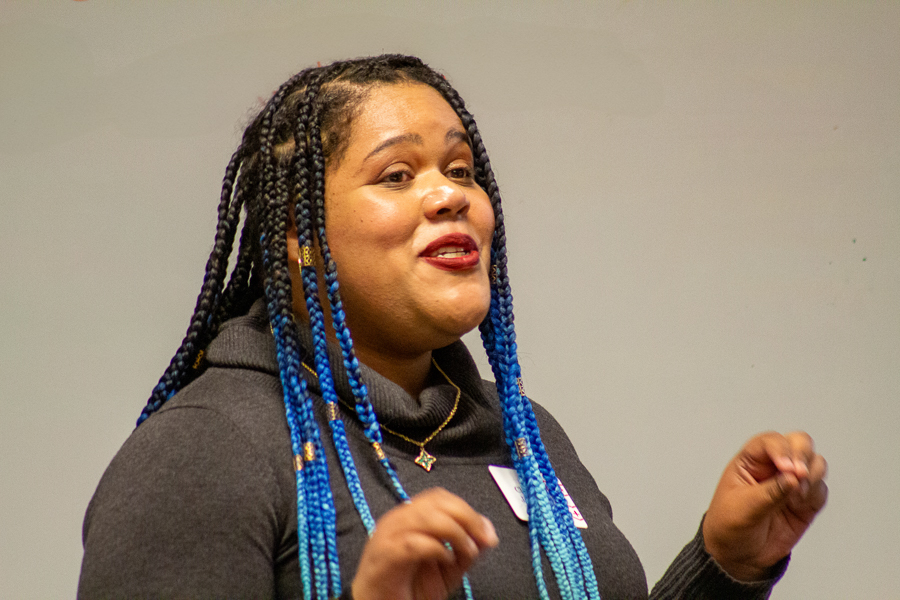
Instead, Jackson leaned into her values: honesty, flexibility and mutual accountability.
“I tell my students, ‘Life comes first. Let’s talk. Communication is key,’” she said.
Her course now incorporates warm-up games like “Would You Rather?” questions to break the ice, personality assessments like True Colors to foster self-awareness and group dynamics, and low-fi music playlists to reduce anxiety in virtual classrooms.
“One student told me they used the playlist to fall asleep because it made them feel calm,” Jackson said, smiling.
She also incorporates creative assessments—like weekly reflection prompts and real-world media analysis —to help students connect deeply with content.
Jackson’s intentional approach creates a safe, trusting learning environment.
New Tools for Instructors
In the final presentation, Cole Palmer from the CAPS Instructional Design team introduced Panopto, a powerful new video platform now available to all CAPS faculty through Canvas starting Summer 2025.
“Panopto is super intuitive,” Palmer said. “If you’ve ever used Kaltura, this will feel familiar—but with way more functionality.”
Through a live demo, Palmer showed how faculty can enable Panopto in their Canvas navigation with just a few clicks. Once set up, instructors can easily record lectures, screen-share multiple apps, edit videos directly within Canvas, and even embed quizzes that sync with the Canvas gradebook.
One standout feature? Analytics.
“You can view detailed data on how students interact with your videos—even if it’s a YouTube video you embedded,” Palmer explained. “And all of that lives inside Canvas. No switching between platforms.”
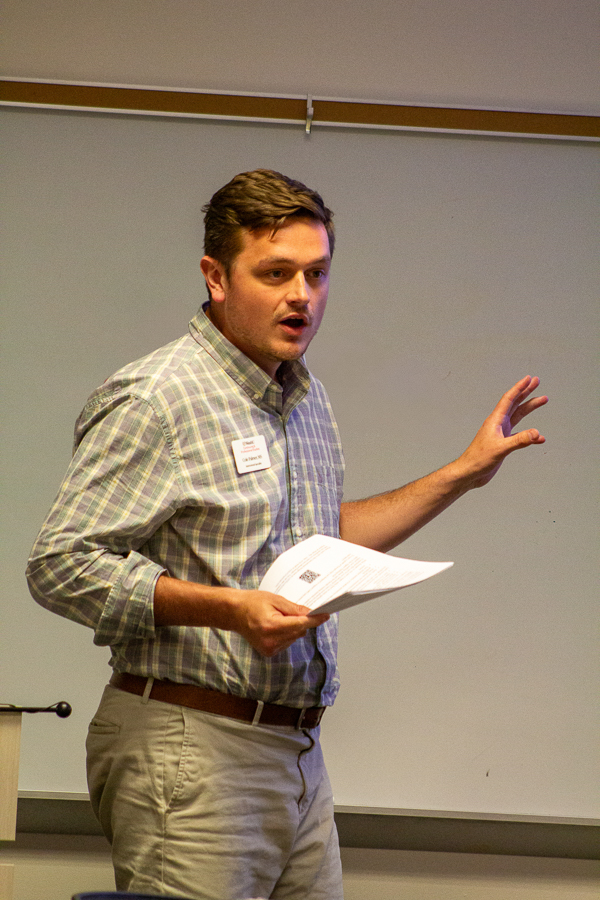
Shared Purpose, Shared Growth
Both Franke and Jackson credit CAPS with creating space for innovation and flexibility.
“I’d taught in corporate settings, but this was new for me,” said Franke. “The support I got from the instructional team was incredible.”
“Every student is different,” said Jackson. “But if you meet them with authenticity, they’ll rise to meet you too.”
In a room full of faculty, peers, and collaborators, this year’s Show and Share reminded everyone what makes the CAPS community unique: a shared belief that learning is a two-way street—and that the best classrooms are built on trust, engagement and a little creative courage.
